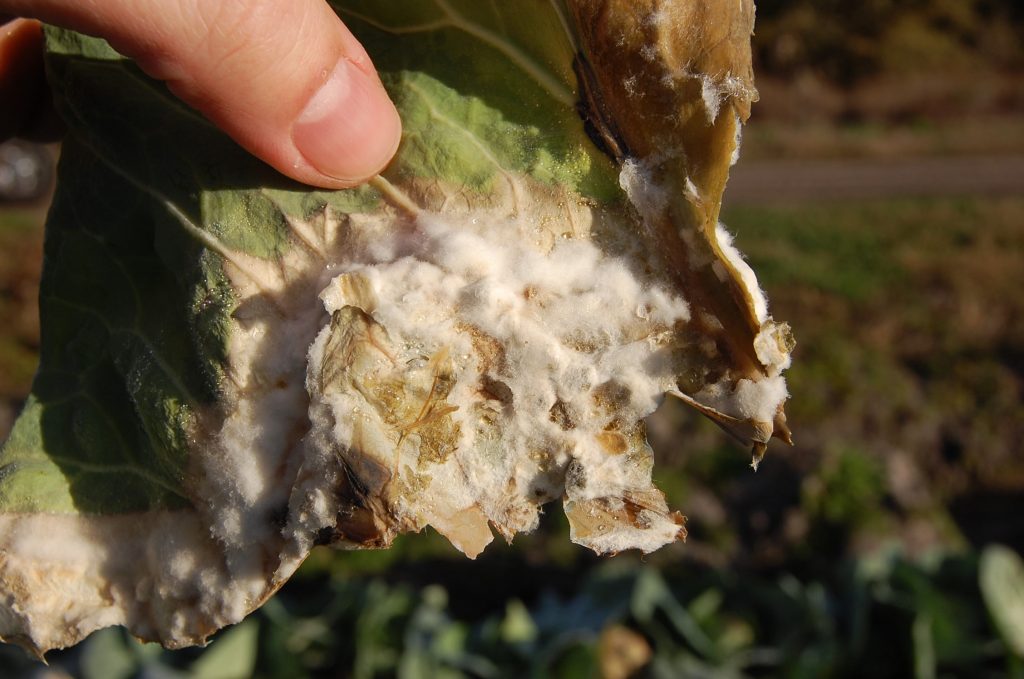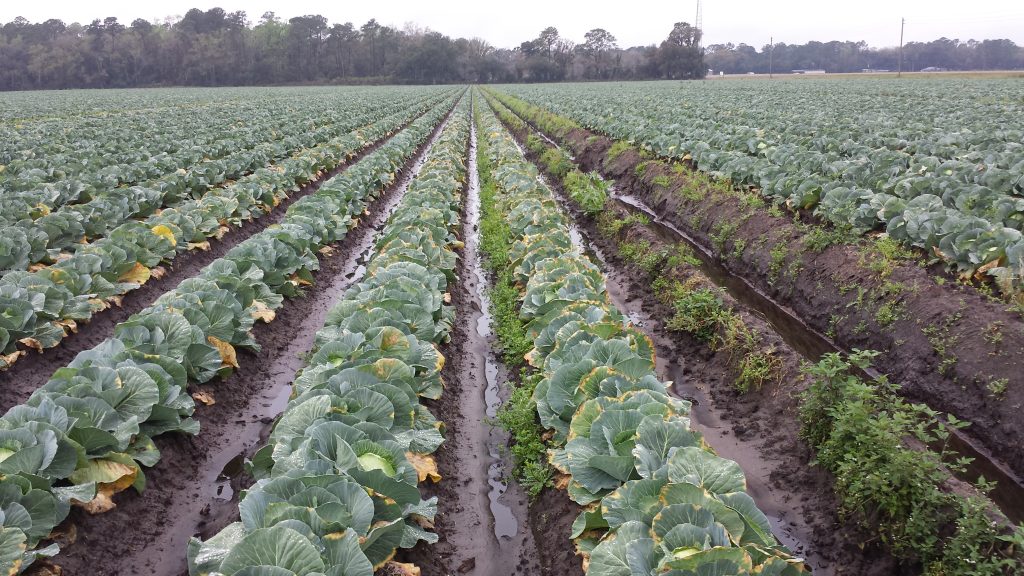Florida’s unique climate can create the optimal environment for a multitude of cabbage diseases. Nick Dufault, plant pathologist with the University of Florida (UF), says white mold and black rot have historically been common cabbage diseases that can cause serious damage.
WHITE MOLD
White mold, caused by the fungus Sclerotinia sclerotiorum,can be somewhat easy to identify since one of the symptoms resembles fuzzy mold. Water-soaked lesions on the leaves or crown of the plant are also key indicators of white mold. The disease can enter a field in various ways and can lay dormant in soil for years. “White mold has always been a big issue for a lot of growers,” Dufault says.

Dufault recommends growers be vigilant with their white mold control. Starting control methods early can be helpful. “The earlier you can get out and do some management for that disease, the better you’ll see for control and the better yields you’ll see come out of it, too,” he explains.
White mold can also cause problems in storage. “We haven’t done a lot of research on that, but it’s such a prolific pathogen that once one cabbage head has it and another head touches it in a container, it can spready very quickly,” Dufault warns. Therefore, growers should be on the lookout for white mold while harvesting.
According to Dufault, a lot of growers have products for white mold in their programs already. One of the products he recommends is Endura, a fungicide many growers use that has shown good efficacy against white mold. He reminds growers to be sure to follow the rates on the label.
Dufault and fellow UF researchers are working with others in the industry on a decision support system that can help with accurately timing fungicide applications. Right now, they are testing the application on potato late blight. Soon, they will try to adapt it to white mold by first testing it on soybeans then on other crops.
Aside from fungicides, growers can take other precautions against white mold. Avoiding spread of the fungus is key for prevention. The fungal spores can be spread through the wind and end up in the water, on farm equipment and in soil. Field plowing, irrigation management and ensuring optimal crop spacing are practices growers should follow to prevent white mold. Since the disease can be brought into a field via transplants, planting healthy transplants is key to keeping this fungus away.
BLACK ROT
Black rot, another disease commonly seen in Florida cabbage production, is considered one of the most serious diseases for the state’s cabbage growers. Not only can this pathogen cause major losses, but once a field is infected, it is difficult to get rid of the disease.
Black rot is caused by the bacterium Xanthomonas campestris pv. campestris. The disease can enter through natural openings on the crop above or below the soil, or from injury openings, including openings in the roots from the pulling and setting of transplants. Disease also can enter through plant openings caused by insects.
Once a plant is infected, black rot systemically spreads through the crop. Early symptoms of the disease include stunting, yellowing of the leaves and blackening veins. Warm and wet conditions are optimal for this pathogen.
Having a sound control program is crucial to avoid damage from this disease. Starting the planting process with healthy, certified disease-free seed is vital. Practicing good sanitation on the farm is also important. Dufault says getting control early on is a good idea.
Dufault has been working on trials in Hastings to test out some biological controls for black rot. He is collaborating with researchers in Michigan on the project, which is funded by the IR-4 program. “We’re trying to repeat these trials over a 2-year period in both locations (Florida and Michigan), and we’re looking to see how well these (biological) products did in managing black rot,” Dufault explains.
He says the products tested did have some control on black rot, but not too much. He will be comparing these results with his Michigan partners soon.
Dufault reminds growers to utilize the UF Diagnostic Center as well as their local Extension agents and UF faculty. Growers should ensure they know what pathogen they’re dealing with before coming up with a management plan.
“With any of our disease management programs, it starts with a good, healthy seed,” Dufault says. He is available to go out in the field and look at any problem areas. Growers can reach him at nsdufault@ufl.edu.
This article was featured in the June issue of VSCNews magazine. To receive future issues of VSCNews magazine, click here.
Share this Post










